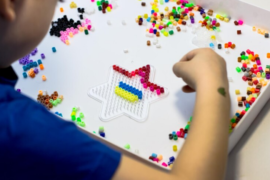
Children like to explore everything around them using their senses. Sensory activities play an important role in their overall development and have become a part of the preschool curriculum due to this reason.
Benefits of Sensory Activities for Toddlers & Preschoolers
- In their toddler years, children try to do things independently and develop their thinking abilities. A child care center may use a few activities, such as sorting the colors and comparing the light and dark, to teach toddlers different concepts, such as opposites and time.
- The preschoolers are more independent in exploration and learn to speak at this age. Therefore, an early education center may encourage preschoolers to play musical instruments, build objects or create shapes using different
Few Examples of Sensory Activities
- Tactile Play
The kids’ learning centers may use tactile play to stimulate the touch senses of the children. Kids may learn about texture, temperature, vibration, pressure and other sensations through tactile play. You can include the following items during tactile play:
-
- Baking flour
- Hard objects of different shapes and made of varying materials
- Cotton balls
- Playdough
- Water of varying temperatures
- Visual Sensory Play
Visual sensory activities contribute to developing a child’s vision and sight. Teachers may use the following objects or actions during visual sensory play in a school.
-
- Sensory bottles filled with water and glitter for kids to shake and observe
- Scavenger hunt
- Finger-painting
- Auditory Sensory Activities
Through auditory sensory activities, a child learns to differentiate different sounds and develop their sense of hearing. An early education center can use the following items during auditory play.
-
- Baby rattles
- Musical instruments
- Knocking on different materials since they produce varying sounds
- Proprioception & Vestibular Sensory Activities
-
- Some activities (jumping, swinging, hanging or rolling around) stimulate a child’s vestibular system and can contribute to a child’s balance development.
- Through proprioception activities (pushing, pulling or jumping), children learn how their limbs relate to the other parts of their body and about where they are in space.
At Petite School House, learning becomes fun by doing sensory activities.



